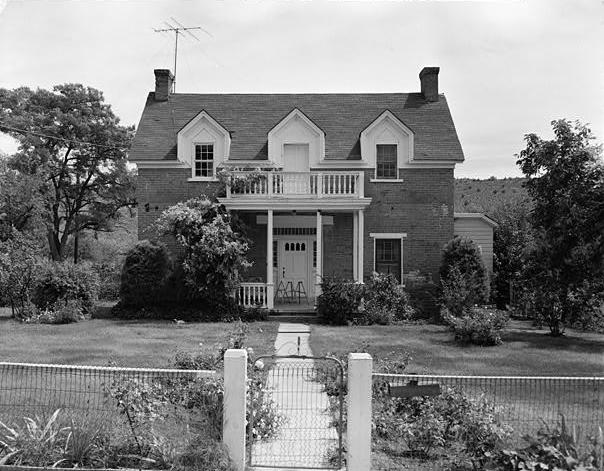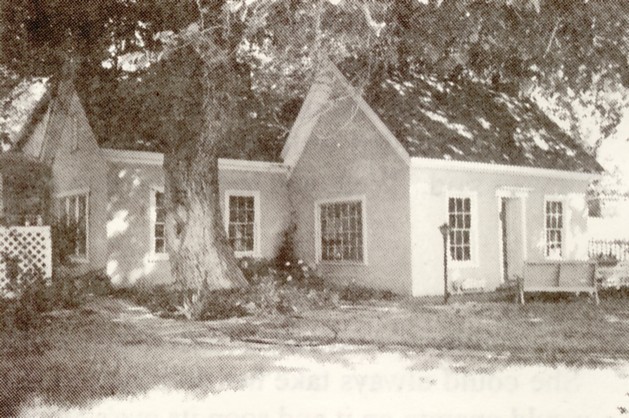Leeds Utah History
Rich Leeds Utah History.
Once known as Bennington, Leeds Utah was founded due to flooding in the neighboring town of Harrisburg. The residents in Harrisburg decided to move to this area in 1867. It was called Road Valley and was just to the north. It was more suitable for farming and diverting water. The settlers dug an irrigation ditch and water was brought to the town.
The town was founded on December 1, 1867, and named Bennington, after the name of the town’s bishop, Benjamin Stringham. In May of 1869, Bennington name changed to Leeds. It was renamed Leeds, after Leeds in West Yorkshire, a town where the Bishop Benjamin Stringham had served as a Mormon missionary.
Leeds Utah was noted in the past for its abundant fruit and sorghum. The town has always been known as the area having the longest growing season in Utah. Main Street has numerous buildings dating from the 1800’s. Fifteen homes built prior to 1900 still remain standing on Leeds Utah Main Street. The people are friendly and there are long seasons of pleasant days and nights, making this little town an enjoyable place to visit and a wonderful place to live.
Leeds Utah History William Stirling
Stirling Home Built in 1876 by Samuel Worthen and Sons. It cost $5000 to build.
William was a farmer and winemaker. His wife was Sarah Ann. Descendants of their home continue to live in their house today.
William Stirling, a prominent and early settler to Leeds, Utah, saved the Christy Mill from certain disaster one cold winter day in 1872. Being the Chief Executive Officer for the Leeds Water Company, he observed while riding his horse that this five-stamp silver ore processing mill was overheating because of the water supply freezing. Quickly he opened head gates which move water from the Leeds ditch system to the overheating mill. The owners of the Mill were so grateful that they placed Stirling on the payroll with a handsome salary for a full year with no need to work for the earnings. He used this wage to build the two-story brick home pictured above, giving his previous home to his parents.
William Stirling having played an important role in the early history of Leeds Utah and Silver Reef, realized that many of the empty buildings in Silver Reef could be mined. This was following the silver boom. He converted the St John’s Catholic Church of Silver Reef, after buying and moving it to Leeds in 1895, into the Leeds Social Hall of “Old Stirling Hall”. Dances, plays, variety shows and festive events took place there.
Leeds Utah History Brigham Young McMullin Home
Brigham bought the lot form B.C. Boren. His father, Willard G. McMullin, built a one room rock house in the summer of 1881. The rock walls are 18 inches thick and the ceiling is 9 feet high.
After Brigham and his wife, Ada, moved in, they added four more rock rooms. One has been made into a bathroom and hallway. For added convenience and modernization, more rooms have been added, such as a dining room and kitchen made of lumber. The outside walls were covered in stucco to cover the rock as well.
With Brigham being the bishop of the Leeds Ward, he had the opportunity for many LDS church leaders to stay in his home. Leaders such as Lorenzo Snow, Joseph F. Smith and Heber J. Grant. His home became known as the “Mormon Hotel”. The hotel across the street was for paying guests and the McMullin Home was for nonpaying guests. Butch Cassidy slept here as well as Lucy
Young Gates, an opera singer who was on her way to the Opera House in St. George. This home continues to remain in the family. Owned now by Joanne Thornton, granddaughter of Brigham and Ada McMullin and daughter of Ethyl McMullin George.
Business of Leeds Utah
At the start, growing grapes and selling wine was the main business in Leeds. Later, they provided support services for Silver Reef. When Silver Reef was no longer inhabited, many different crops were grown in Leeds. Cane sugar was farmed for sorghum. Some did cattle ranching.
Power
Electricity came to Leeds Utah when the citizens decided to bring it in. It was $75 to get it into each home. First, they ran telephone poles down the center of Main Street with the wires running to each house. On August 21, 1916, the citizens met and decided to move the poles out of the street and onto the west side of the street.
Leeds Utah History Incorporated
Leeds became incorporated in May of 1953. In 1991, Leeds passed a Historical Preservation Ordinance to preserve the many buildings and homes built prior to 1900.
Leeds Utah
Leeds Utah is in Washington County, along I-15, 139 miles north of Las Vegas and 289 miles south of Salt Lake City. Centrally located between Southern Utah’s many national and state parks
including Zion, Bryce Canyon, Quail Creek and Snow Canyon. In recent years, the city’s close proximity to the ghost town of Silver Reef, the Pine Valley Mountains, and Zion National Park have caused more tourism in the area.
Today
Quiet country living, yet close to all the activities Southern Utah provides. Head out to hikes, restaurants, movies and shopping with only a short drive while enjoying the starry night skies and restful nights.
Gardening
Is gardening your passion? Leeds, Utah has the longest growing season in the state! Known for its abundant fruit and sorghum.
Views and Access
Enjoy scenic views and national and state parks? Being centrally located to all the parks in Southern Utah, Leeds, Utah not only has the country feel but also the best location to see all of them. Only 20 minutes from St. George, gives you access to many activities and restaurants. Several classes are available and different meetup groups that have your same interest. Check the internet for those meetups that may interest you. A great way to make many friends.
See all Leeds Utah Homes for Sale




